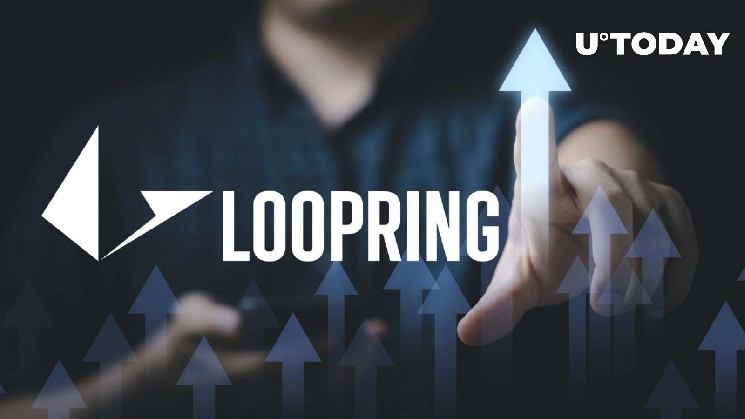Loopring (LRC) Suddenly Jumps 25%, What’s Stirring Growth?

In what appears to be stiff competition among Ethereum-based Layer 2 protocols, Loopring (LRC) has inked sudden sharp growth of 25% to join one of the top-performing altcoins in today’s market revival. For Loopring, the 24-hour high of $0.4525 has repositioned it on a very bullish path that it is now looking to sustain.
As a Layer 2 protocol on Ethereum, Loopring has joined a host of other L2s, repositioning its growth outlook to trail the latest Shapella Upgrade.
Congratulations to the Ethereum ecosystem on delivering another major upgrade in Shapella?
Next stop EIP 4844 — now it’s time for #Layer2 to deliver scalability?
— Loopring? (@loopringorg) April 13, 2023
Loopring is one of the most functional L2 protocols out there, and according to L2Beat’s data, it ranks as the 13th most functional protocol when core metrics, including transaction counts, are factored in.
Loopring’s performance has been very steady and defined since the start of the year as the digital token has soared by more than 110% in the year-to-date (YTD) period. While Loopring may not be able to outcompete its peers in terms of lower transaction fees, it is currently showcasing itself as a token with reliable momentum to build a steady return for HODLers.
The asset’s 690% jump in trading volume has also been showcased as a sign that it has positive goodwill in its community.
Highlighting Loopring mantra
While scalability is at the core of its design, Loopring is arguably being paraded as an open protocol designed for the building of decentralized crypto exchanges. The fact that it has a niche focus has also helped it channel its growth strategies in a way that is sustainable.
As reported earlier by U.Today, Loopring has scored a number of prominent partnerships, including one with OpenOcean back in 2021. In all, the Loopring mantra is being spread across the depths of the Web3.0 ecosystem and into the mainstream tech world.
One thing that appears imminent is that the mainstream adoption of the protocol in the face of current L2 competitions will not be as sudden as might be predicted.






 Bitcoin
Bitcoin  Ethereum
Ethereum  Tether
Tether  USDC
USDC  TRON
TRON  Dogecoin
Dogecoin  Cardano
Cardano  Bitcoin Cash
Bitcoin Cash  Chainlink
Chainlink  Monero
Monero  LEO Token
LEO Token  Zcash
Zcash  Stellar
Stellar  Litecoin
Litecoin  Hedera
Hedera  Dai
Dai  Cronos
Cronos  Tether Gold
Tether Gold  OKB
OKB  Ethereum Classic
Ethereum Classic  KuCoin
KuCoin  Gate
Gate  Algorand
Algorand  Cosmos Hub
Cosmos Hub  VeChain
VeChain  TrueUSD
TrueUSD  Dash
Dash  Tezos
Tezos  Stacks
Stacks  IOTA
IOTA  Basic Attention
Basic Attention  Theta Network
Theta Network  Decred
Decred  NEO
NEO  Synthetix
Synthetix  Qtum
Qtum  Ravencoin
Ravencoin  DigiByte
DigiByte  0x Protocol
0x Protocol  Nano
Nano  Zilliqa
Zilliqa  Holo
Holo  Siacoin
Siacoin  Numeraire
Numeraire  Waves
Waves  Status
Status  BUSD
BUSD  Enjin Coin
Enjin Coin  Pax Dollar
Pax Dollar  Ontology
Ontology  Hive
Hive  Lisk
Lisk  Steem
Steem  Huobi
Huobi  NEM
NEM  OMG Network
OMG Network  Bitcoin Gold
Bitcoin Gold  Augur
Augur  Ren
Ren  HUSD
HUSD